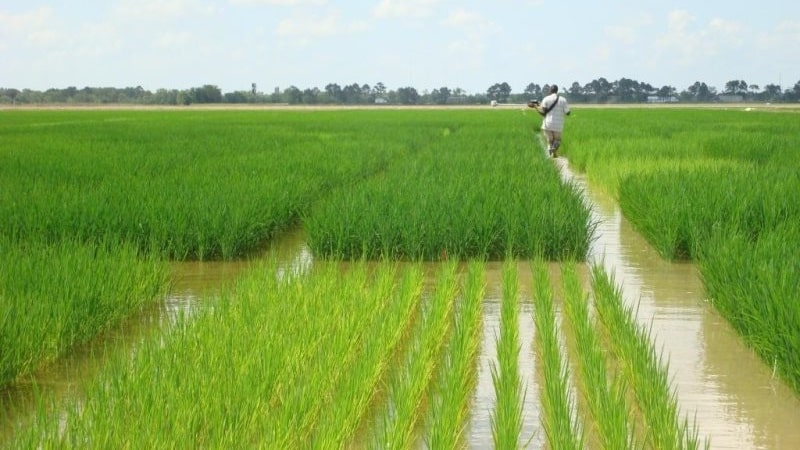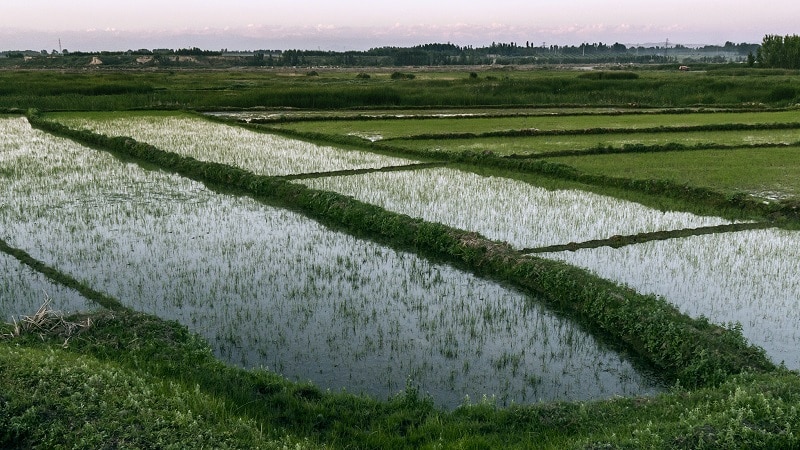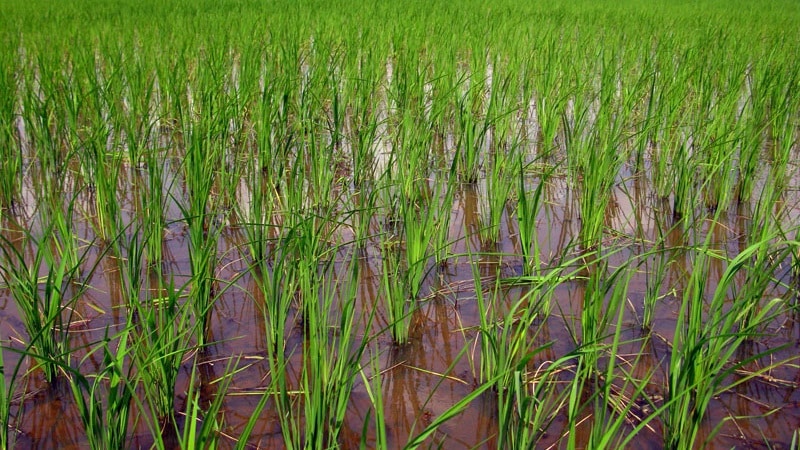Features of rice cultivation in the Krasnodar region
Tasty and healthy rice dishes are included in any diet, but have you ever thought about where this grain comes from on our table and how it is grown? Rice is a traditionally Asian crop, but it also grows in our country.
In this article we will talk about how rice is grown in the Krasnodar region.
How and where does rice grow?
Rice is grown in subtropical and tropical climates. The world leader in the production and import of cereals is China; it is cultivated in Southeast Asia, Japan, Brazil, the USA, Pakistan, Egypt, and the CIS countries.
This is a fastidious and demanding plant for daylight hours.. For full growth, special conditions are important for it: shade, constant high humidity, temperature about +18°C.

The crop is cultivated in special fields:
- irrigation;
- upland;
- Estuary
The areas are completely filled with water and not allowed to dry out.until the rice is completely ripe.
Interesting facts about rice:
Growing rice in the Krasnodar region
In Russia, rice is traditionally cultivated in the Krasnodar regionwhere the climate is most suitable for this. The grain also grows in other regions, but the Kuban rice-growing complex is the largest in the country.
Here the crop is cultivated using a special technology, different from that used in Asian countries. In some areas, the fertile soil layer is only 15 cm, so fertilizers are actively used.Before harvesting, the fields are completely drained, and then they are allowed to “rest”, planting soybeans, wheat or other cereal crops in this place every 2-3 years.

In the south of Russia rice is grown in the lower reaches of the Kuban River, rich in warmth and soil. The flat terrain here creates favorable conditions for vast grain fields. The center of rice growing is Krasnoarmeysky district.
Reference. In the Krasnodar Territory, one grain crop ripens per year, while in warmer Asian countries two are harvested.
What varieties grow in Kuban
To improve the quality of products, breeding scientists regularly develop new crops. More than 40 varieties of rice bred in Russia are cultivated in Kuban.
Reference. Varieties differ in color, starch content, processing method, grain shape and size.
Rice varieties grown in the Krasnodar region belong to the Japonica variety - round soft product. This cereal is suitable for porridge or pudding, as it is sticky and boils well. Rice from Kuban contains a lot of protein, is environmentally friendly and is rarely attacked by pests.
By the way! To study new agricultural technologies and selection, the All-Russian Rice Research Institute was created in Krasnodar.
The main varieties of cereals cultivated in Kuban:
- Ruby - red;
- Southern night - black;
- Regulus - round white;
- Black pearls - unpolished black;
- Khazar - white round;
- Viola - sticky white;
- Rapan - white, one of the most popular Kuban varieties;
- The flagship is white and round.
Read also:
Growing technology
Rice growing in Kuban began to actively develop in the 70–80s of the 20th century. To date, a special technology for cultivating the crop has been established.

Important nuances
Plants require high humidity, so they are planted near large sources of water: reservoirs, rivers or lakes. This way, water is supplied to rice fields without large financial and technological costs.
To regulate soil moisture, drainage and drainage networks are created. To prevent uneven flooding, the surface of the field must be leveled.
Landing Features
Rice in the Krasnodar Territory is planted in small fields called checks. Together with the canals, they form a complex irrigation field system. In this region, planting in such areas yields higher yields than in estuary or dry lands.
For cultivation saline, moist soil is suitable, which is not suitable for other plants.
Planting begins in May, but its exact date and time depend on the type of cereal and soil. Rice is planted on pre-watered soil, checks are prepared: they are laid out, drainages are cleaned, agrotechnical and hydraulic work is carried out. Dry seeds are scattered with mechanical seeders and rolled down so that they do not float when the field is flooded with water.
For better distribution of liquid, diagonal strips are cut on the checks. When the sprouts reach 20 cm, the fields are flooded with water from the Kuban River, a local lake or a special reservoir.

Planting care
To accelerate growth and increase productivity, the crop is fertilized nitrogen, phosphorus and potassium compounds. Spraying and pest control are carried out from airplanes.
To control the uniformity of flooding agronomists drive around the fields, checking the water level using special slats.In saline soil, water is drained several times a season to reduce the salt content. The fields are drained before weeding.
Reference. The temperature for rice growth in the Krasnodar region is +25…+30°C.
Harvesting
Grain is harvested in August or early September. This is done exclusively on clear, dry days. 10–15 days before this, the checks are completely dried so that equipment can pass over them. Harvesters remove and thresh the ears. Sometimes harvesting continues around the clock.
After grain delivery from the field immediately dried and passed through cleaning machines.
Conclusion
Growing rice in the Krasnodar region is a labor-intensive process, but the result is worth it. In Kuban they use a special technology for cultivating cereals: they plant it according to checks, fertilize it, drain the fields before harvesting and remove it with agricultural machinery.
More than 40 varieties of rice have been developed in Russia, which are sold domestically or exported.